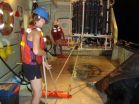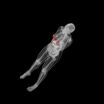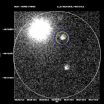(Press-News.org) WASHINGTON (June 4, 2014) — In order to meet new cancer program accreditation standards, institutions have placed new focus on patient navigation, psychosocial distress screening, and survivorship care plans. Recently published research by the George Washington University (GW) Cancer Institute found these new programs are experiencing "growing pains." The results of a nationwide survey conducted by the GW Cancer Institute and reviewed in the Journal of Oncology Navigation and Survivorship, found that health care professionals could most benefit from greater evaluation of their program's impact.
"This national study from GW Cancer Institute's Center for the Advancement of Cancer Survivorship, Navigation and Policy provides insights into current approaches and barriers for patient-centered care in practice," said Mandi Pratt-Chapman, M.A., director of the GW Cancer Institute. "These findings will help us focus our collective efforts to address identified gaps such as navigation role delineation and how to measure value of these programs."
The survey, completed by 100 healthcare providers—many of them patient navigators and nurses—found that nearly half of respondents had both a navigation and survivorship program at their institution. Full-time navigators had an average patient load of 100-400 patients, in various phases of the cancer continuum of screening, diagnosis, treatment, and posttreatment. Respondents identified a wide range of measurements and tracking tools, with a heavy reliance on low-tech options. The greatest challenge area identified was a lack of funding. While demonstrating value was seen as a way to sustain navigation programs, nearly 60 percent of respondents were not tracking value at all. Additionally, role clarity was cited as an important challenge.
The research found that patient navigators assisting patients during screening may be able to navigate a significantly greater number of patients annually than navigators assisting patients after diagnosis; and navigators supporting patients in treatment may need a smaller caseload than navigators supporting patients in other points of the continuum. The results also indicated a need to identify financially sustainable models for patient navigation and clinical survivorship programs, as well as a consensus on core measures.
"Our results provide critical insight into implementation practices as it relates to navigation and survivorship programs from institutions around the country," said Anne Willis, M.A., director of the division of cancer survivorship at the GW Cancer Institute. "These findings will help health care professionals who are working to create and improve programs, where little guidance is available."
INFORMATION:
Media:
To interview an author of the paper, please contact Lisa Anderson at lisama2@gwu.edu or 202-994-3121.
About the GW School of Medicine and Health Sciences:
Founded in 1824, the GW School of Medicine and Health Sciences (SMHS) was the first medical school in the nation's capital and is the 11th oldest in the country. Working together in our nation's capital, with integrity and resolve, the GW SMHS is committed to improving the health and well-being of our local, national and global communities. smhs.gwu.edu
GW Cancer Institute conducts survey on moving toward quality patient-centered care
2014-06-04
ELSE PRESS RELEASES FROM THIS DATE:
Hemorrhagic fevers can be caused by body's antiviral interferon response
2014-06-04
LA JOLLA, CA—June 4, 2014— Hemorrhagic fevers caused by Lassa, dengue and other viruses affect more than one million people annually and are often fatal, yet scientists have never understood why only some virus-infected people come down with the disease and others do not.
But now, virologists and immunologists at The Scripps Research Institute (TSRI) have found a major clue to the mystery of "hemorrhagic fever" syndromes. In findings reported this week in an Early Edition of the Proceedings of the National Academy of Sciences, the team showed that Interferon Type I (IFN-I) ...
Astronomers discover first Thorne-Zytkow object, a bizarre type of hybrid star
2014-06-04
In a discovery decades in the making, scientists have detected the first of a "theoretical" class of stars first proposed in 1975 by physicist Kip Thorne and astronomer Anna Żytkow. Thorne-Żytkow objects (TŻOs) are hybrids of red supergiant and neutron stars that superficially resemble normal red supergiants, such as Betelguese in the constellation Orion. They differ, however, in their distinct chemical signatures that result from unique activity in their stellar interiors.
TŻOs are thought to be formed by the interaction of two massive stars―a ...
How red tide knocks out its competition
2014-06-04
New research reveals how the algae behind red tide thoroughly disables – but doesn't kill – other species of algae. The study shows how chemical signaling between algae can trigger big changes in the marine ecosystem.
Marine algae fight other species of algae for nutrients and light, and, ultimately, survival. The algae that cause red tides, the algal blooms that color blue ocean waters red, carry an arsenal of molecules that disable some other algae. The incapacitated algae don't necessarily die, but their growth grinds to a halt. This could explain part of why blooms ...
New diagnostic imaging techniques deemed safe in simulations
2014-06-04
DURHAM, N.C. -- Gamma and neutron imaging offer possible improvements over existing techniques such as X-ray or CT, but their safety is not yet fully understood. Using computer simulations, imaging the liver and breast with gamma or neutron radiation was found to be safe, delivering levels of radiation on par with conventional medical imaging, according to researchers at Duke Medicine.
The findings, published in the June issue of the journal Medical Physics, will help researchers to move testing of gamma and neutron imaging into animals and later humans.
Conventional ...
Study: When hospital workers get vaccines, community flu rates fall
2014-06-04
Anaheim, Calif., June 4, 2014 – For every 15 healthcare providers who receive the influenza vaccination, one fewer person in the community will contract an influenza-like illness, according to a study using California public health data from 2009 – 2012.
In an abstract that will be presented on June 7 at the 41st Annual Conference of the Association for Professionals in Infection Control and Epidemiology (APIC), a researcher analyzed archival data from the California Department of Public Health to determine the relationship between vaccinating healthcare personnel against ...
MU scientists successfully transplant, grow stem cells in pigs
2014-06-04
COLUMBIA, Mo. – One of the biggest challenges for medical researchers studying the effectiveness of stem cell therapies is that transplants or grafts of cells are often rejected by the hosts. This rejection can render experiments useless, making research into potentially life-saving treatments a long and difficult process. Now, researchers at the University of Missouri have shown that a new line of genetically modified pigs will host transplanted cells without the risk of rejection.
"The rejection of transplants and grafts by host bodies is a huge hurdle for medical researchers," ...
Saturated fat intake may influence a person's expression of genetic obesity risk
2014-06-04
Boston, MA (June 4, 2014) ─ Limiting saturated fat could help people whose genetic make-up increases their chance of being obese. In a new study, researchers from the Jean Mayer USDA Human Nutrition Research Center on Aging (USDA HNRCA) at Tufts University identified 63 gene variants related to obesity and used them to calculate a genetic risk score for obesity for more than 2,800 white, American men and women enrolled in two large studies on heart disease prevention. People with a higher genetic risk score, who also consumed more of their calories as saturated fat, ...
Ice cream sensations on the computer
2014-06-04
Changes in coldness, creaminess or texture that we experience in the mouth while we are eating an ice cream can be visualised on a screen using coloured curves. Graphs help manufacturers improve product quality, as proven by researchers at the Institute of Agrochemistry and Food Technology in Valencia, Spain.
In the last five years a technique known as 'Temporal Dominance of Sensations' (TDS) has become popular, used to analyse how consumer impressions evolve from the moment they taste a product.
Researchers at the Institute of Agrochemistry and Food Technology (CSIC) ...
Weight loss surgery also safeguards obese people against cancer
2014-06-04
Weight loss surgery might have more value than simply helping morbidly obese people to shed unhealthy extra pounds. It reduces their risk of cancer to rates almost similar to those of people of normal weight. This is the conclusion of the first comprehensive review article taking into account relevant studies about obesity, cancer rates and a weight loss procedure called bariatric surgery. Published in Springer's journal Obesity Surgery, the review was led by Daniela Casagrande of the Universidade Federal do Rio Grande do Sul in Brazil.
With bariatric surgery, a part ...
Observed by Texas telescope: Light from huge explosion 12 billion years ago reaches Earth
2014-06-04
Intense light from the enormous explosion of a star more than 12 billion years ago — shortly after the Big Bang — recently reached Earth and was visible in the sky.
Known as a gamma-ray burst, light from the rare, high-energy explosion traveled for 12.1 billion years before it was detected and observed by a telescope owned by Southern Methodist University, Dallas.
Gamma-ray bursts are believed to be the catastrophic collapse of a star at the end of its life. SMU physicists report that their telescope was the first on the ground to observe the burst and to capture an ...





